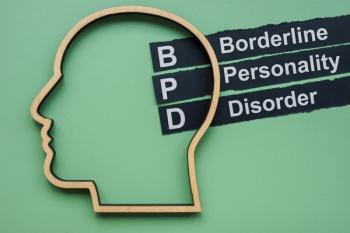
Adjustment Disorders: Diagnostic and Treatment Issues
Adjustment disorder is one of the few psychiatric diagnoses for which the etiology, symptoms, and course, rather than symptoms alone, are central to making the diagnosis. Both emotional and behavioral disturbances are present and include low mood, tearfulness, anxiety, self-harm, withdrawal, anger, and irritability.
The diagnostic category of adjustment disorder (AD) made its first appearance in DSM-III in 1968, replacing the previous “transient situational disturbance” of DSM-II, and shortly after was included in ICD-9. It has persisted into the current versions of both DSM-IV and
Definition
AD is defined in DSM-IV as:
. . . emotional or behavioral symptoms in response to an identifiable stressor(s) occurring within 3 months of the onset of the stressor(s). These symptoms or behaviors are clinically significant as evidenced by either . . . marked distress that is in excess of what would be expected from the stressor [or] significant impairment of social or occupational (academic) functioning.
This definition excludes the diagnosis if there is another Axis I or II disorder to which the symptoms may be attributed or if the symptoms are due to bereavement (
ICD-10 limits the time frame of onset to within 1 month of the causative stressor and, as with DSM-IV, categorizes it as one of exclusion, specifying that the criteria for an affective disorder must not be met. The categories in ICD-10 are brief depressive reaction, prolonged depressive reaction, mixed anxiety and depressive reaction, with predominant disturbance of other emotions, with predominant disturbance of conduct, with mixed disturbance of emotions and conduct, and with other specified predominant symptoms.
While DSM-IV states that the symptoms should resolve within 6 months, it also recognizes a chronic form if exposure to the stressor is long-term or the consequences of exposure to the stressor are prolonged. For example, the loss of a job may lead to the loss of the home, thereby causing marital problems. So the diagnosis can be made even when the index event has resolved or the 6-month time frame has been reached if consequences continue. ICD-10 is silent on the knock-on effect of stressors but allows a 2-year period of symptoms in the prolonged depressive subtype.
Symptoms caused by mood fluctuations in response to day-to-day stressful events that occur in persons with borderline (emotionally unstable) personality disorder are not classified as AD. AD is one of the few psychiatric diagnoses for which the etiology, symptoms, and course, rather than symptoms alone, are central to making the diagnosis.1
Controversies and dilemmas
A diagnosis of AD raises a number of dilemmas. The first is the distinction from normal reactions to stress, a separation that is important so as not to pathologize the day-to-day travails of life. There is nothing to assist the clinician in making this distinction except that ICD-10 requires both functional impairment and symptoms to make the diagnosis, while DSM requires symptoms or impairment. Thus, ICD is more stringent and has a higher threshold than DSM. Arguably, a decision on whether a reaction is pathological should take account of a number of factors, including:
•
• Individual circumstances (eg, the loss of a job may render a person homeless, which is appropriately associated with high levels of distress)
• The mere fact of visiting a doctor or being referred to a mental health professional should not inevitably be regarded as indicative of disorder
• The level of functional impairment as a result of the symptoms (ICD-10 only)
The second dilemma is the differentiation of AD from other Axis I disorders, such as generalized anxiety disorder (GAD) and major depression disorder (MDD). Simply on the basis of symptom numbers and duration of more than 2 weeks, AD would be relabeled as MDD after the time threshold has been crossed, even though the onset of symptoms was temporally close to the stressor. Thus, a young woman with children who had received a diagnosis of stage IV cancer 3 weeks earlier and now has low mood, is
Ordinarily, one would expect the symptoms to resolve when the stressor diminished or was removed. At other times, notwithstanding the persistence of the stressor or its ramifications, the person adapts. A diagnostic conundrum arises, however, when the symptoms and the stressor persist in tandem-is the appropriate diagnosis chronic AD, MDD, or appropriate sadness? In general, normal reactions to events resolve quickly and do not persist, hence, the time frames specified in DSM-IV and ICD-10. A further reason for monitoring is that the symptoms may represent a disorder, such as evolving MDD that emerges more clearly over time.
Another controversy stems from the subsyndromal nature of AD. It may be that allowing MDD to override a diagnosis of AD is a clinical mistake, since there is little to distinguish one from the other in terms of symptoms, although the course of each is different.2 In addition, doing so is illogical because the diagnosis of MDD is cross-sectional and is based on symptom numbers and duration; the course of AD is longitudinal and is based on etiology and duration. Thus, MDD and AD represent conceptually different, nonoverlapping dimensions.
This suggests that the current diagnostic system based on symptom thresholds is limited and that in DSM-5 more emphasis should be placed on the specific symptom clusters and their quality. Moreover, the longitudinal course of AD should receive more attention. Since a diagnosis of AD cannot be made at present when the threshold for another condition is met, it is currently regarded as a subsyndromal rather than a full Axis I disorder.1 However, its clinical importance may be such that it should be accorded full syndromal status with its own diagnostic criteria.3
Prevalence
AD is underresearched, and most of the large
The prevalence of AD has been found to be 11% to 18% in primary care.7,8 In consultation-liaison, where the diagnosis is most often made, the rates are similar: 7.1% to 18.4%.9-11 This, however, is in a state of flux, and it may be that the “culture of prescription” drives the “culture of diagnosis.”1 The diagnosis of AD has declined from 28% in 1988 to 14.7% in 1997, while the diagnosis of MDD has increased (6.4% to 14.7%) over the same 10 years.12
A major problem in studying AD is the absence of any specific diagnostic criteria with which to make the diagnosis. Instruments such as the Structured Clinical Interview for DSM (SCID) and the Schedules for Clinical Assessment in Neuropsychiatry (SCAN) include the criteria for AD, albeit in a cursory manner. So it is not possible to achieve a gold standard measure based on the current criteria in DSM-IV and ICD-10. For this reason, clinical diagnosis with all its associated problems is the only standard currently available.
Structured diagnostic and screening instruments for AD
Structured interviews are frequently considered the gold standard in psychiatric research because they eliminate the subjective element of the diagnostic process; however, for purposes of diagnosing AD, there are problems. Some of the most widely used structured interviews in research, such as the Clinical Interview Schedule and the Composite International Diagnostic Interview, fail to include AD.13,14 Others, such as SCID, SCAN, and the Mini International Neuropsychiatric Interview, include AD but regard it as a subsyndromal diagnosis.15-17 This commonly leads to AD being ignored or conflated with and subsumed by MDD.2,18
Since diagnostic interviews and screening instruments either fail to distinguish between AD and MDD or entirely omit AD, their utility is limited when applied to AD. Thus, the diagnosis of AD relies on the traditional medical skills of careful history taking and clinical judgment in assessing the presenting symptoms, the context in which the symptoms arise, and the likely course of the condition.
Diagnosis
The presence of a stressor is central to the diagnosis of AD, and this is the consideration that most sets AD apart from other disorders in DSM-IV and ICD-10. This makes AD similar to
AD is more strongly associated with marital problems and less with family-related or occupational stressors than MDD.22 Clinically, this is unlikely to be helpful because the types of events are not specific and even traumatic events can trigger AD as well as PTSD.
Symptoms are important to any clinical diagnosis, but they are not sufficiently specific to allow a distinction to be made between AD and MDD.10,23 While neither of the classifications specifies the symptoms required for a diagnosis of AD, there are some symptoms that may be indicative of AD. Yates and colleagues24 found that
The mood state of those with AD often depends on the cognitive presence of the stressor so that immediate impairment of mood is observed when the stressor is discussed, with more obvious mood recovery when the patient is distracted. Thus, removing the person from the stressful situation will lead to a reduction in symptoms that would otherwise persist.
Because of the limitations in the criteria for diagnosing AD, the diagnosis is based on the presence of a precipitating stressor and on a clinical evaluation of the likelihood of symptom resolution on removal of the stressor. For those exposed to stressors long-term, the diagnosis of AD is less clear because this type of exposure can be associated with MDD, GAD, or AD.
Depending on the predominant symptoms, the differential diagnosis may be MDD, GAD, or evolving MDD. When the person exhibits behavioral disturbance such as self-harm or anger, borderline personality disorder must be excluded. For those who have experienced a traumatic event, PTSD must be considered; however, PTSD does not develop in all persons who have been exposed to a
Treatment
AD is largely short-lived and generally resolves spontaneously, which may account for the paucity of studies on the treatment of this common condition. Yet treatment cannot be disregarded, since, despite its brevity, symptoms may be severe and are associated with a risk of suicide.26 In addition, the effect on quality of life and functioning means that there are social and even economic reasons why interventions are worthy of further study.26
In clinical practice, 3 approaches to treatment deserve consideration on the basis of the stress response model:
• Modifying or removing the stressor
• Facilitating adaptation to the stressor using various psychological therapies
• Altering the symptomatic response to the stressor with medication or behavioral approaches
Most randomized controlled trials have focussed on pharmacotherapy for AD with anxiety subtypes. In a study that compared a benzodiazepine with a nonbenzodiazepine anxiolytic, more patients responded to the nonbenzodiazepine, although the reduction in symptom severity was the same by day 28 of the study. Fewer patients who received the nonbenzodiazepine experienced rebound anxiety when medication was discontinued.31
Two randomized placebo-controlled studies that examined symptom response in patients with AD with anxiety subtypes showed a positive effect with kava-kava and valerian extracts.32,33 Ansseau and colleagues,34 found that anxiolytics and antidepressants were equally effective in patients with AD and anxiety. Results from a randomized controlled trial of pharmacological and psychotherapeutic interventions that included supportive psychotherapy, an antidepressant, a benzodiazepine, and placebo showed significant improvements regardless of the intervention.35
There have been no randomized clinical trials that compared antidepressants with placebo or other pharmacological treatments for AD with the depression subtype. Evidence for the use of medications, especially antidepressants, is lacking, and further studies are required.
Prognostic considerations
The most common comorbidities with AD are personality disorder and substance abuse disorders, which have been associated with poor outcome.36-39 Patients with AD are at increased risk for suicide. Psychological autopsy studies have shown that between 6% and 25% of patients who die by suicide have received a diagnosis of AD.26,40 The rates of AD in patients who present after an act of self-harm range from 4% to 10%.41,42 Suicidal ideation has been found to be of a more rapid onset and resolution in patients with AD than in patients with other disorders.41
The definition of AD in both DSM-IV and ICD-10 conveys an expectation of good outcome, with the spontaneous resolution of symptoms. This has been borne out in follow-up studies that found that patients who received a diagnosis of AD on admission had shorter index admissions and fewer psychiatric readmissions than those who received another diagnosis.38
DSM-5 and beyond
The problems concerning the absence of specific diagnostic criteria for AD and the relegation of AD to subsyndromal status are significant concerns that should be taken into account during the framing of DSM-5. Suggestions for new criteria for AD include the following3:
• Terminating the subsyndromal status of AD and according it full diagnostic criteria alongside MDD and GAD
• Extending of the bereavement exclusion to other events
• Recognizing that AD may be conflated with MDD, the following wording is suggested: “Stressors may also trigger adverse reactions that symptomatically resemble major depression, anxiety or conduct disorders but are better classified as AD, particularly when there is a close temporal relationship between the event and the onset of symptoms and spontaneous recovery is anticipated after a period of adaptation or when the stressor is removed.”
• Associating the condition with symptoms and impairment
Currently, the broad criteria for
AD should also be considered in a separate category of stress-related disorders together with PTSD, acute stress reactions and, possibly, dissociation, because all are triggered by a stressful event. The continuing interest in PTSD will inevitably help direct research endeavors to the associated categories. This change would lead to greater harmonization between DSM-5 and ICD-11, in which AD is classified in the stress-related group.
The classification of AD is of more than theoretical interest, since it has implications for how normal stress responses are distinguished from those that are pathological on the one hand and how pathological responses are distinguished from other psychiatric disorders such as MDD and GAD, on the other.
This also has financial implications because antidepressants are now the most commonly prescribed medications in the United States.43 The proportion of the general population for whom antidepressants are prescribed almost doubled from 5.84% in 1996 to 10.12% in 2005. During this time, the use of antidepressants for “depression,” anxiety, and AD increased significantly. The biggest increase was seen in patients with AD-22.3% to 39.4% annually, and this increase is set against a backdrop of a near total absence of scientific evidence for their benefit. Thus, the public is paying for pharmacological treatments that are not necessary and not supported by evidence.
[Editor's note: This article was originally published as a CME in January 2012. Now expired as a CME activity, it is published here for educational purposes only]
References:
References1. Strain JJ, Diefenbacher A. The adjustment disorders: the conundrums of the diagnoses. Compr Psychiatry. 2008;49:121-130.
2. Casey P, Maracy M, Kelly BD, et al. Can adjustment disorder and depressive episode be distinguished? Results from ODIN. J Affect Disord. 2006;92:291-297.
3. Baumeister H, Maercker A, Casey P. Adjustment disorder with depressed mood: a critique of its DSM-IV and ICD-10 conceptualisations and recommendations for the future. Psychopathology. 2009;42:139-147.
4. Myers JK, Weissman MM, Tischler GL, et al. Six-month prevalence of psychiatric disorders in three communities 1980 to 1982. Arch Gen Psychiatry. 1984;41:959-967.
5. Kessler RC, Sonnega A, Bromet E, et al. Posttraumatic stress disorder in the National Comorbidity Survey. Arch Gen Psychiatry. 1995;52:1048-1060.
6. Jenkins R, Lewis G, Bebbington P, et al. The National Psychiatric Morbidity surveys of Great Britain-initial findings from the household survey. Psychol Med. 1997;27:775-789.
7. Casey PR, Dillon S, Tyrer PJ. The diagnostic status of patients with conspicuous psychiatric morbidity in primary care. Psychol Med. 1984;14:673-681.
8. Blacker CVR, Clare AW. The prevalence and treatment of depression in general practice. Psychopharmacology. 1988;95:14-17.
9. Strain JJ, Smith GC, Hammer JS. Adjustment disorder: a multisite study of its utilization and interventions in the consultation-liaison psychiatry setting. Gen Hosp Psychiatry. 1998;20:139-149.
10. Taggart C, O’Grady J, Stevenson M, et al. Accuracy of diagnosis at routine psychiatric assessment in patients presenting to an accident and emergency department. Gen Hosp Psychiatry. 2006;28:330-335.
11. Bakr A, Amr M, Sarhan A, et al. Psychiatric disorders in children with chronic renal failure. Pediatr Nephrol. 2007;22:128-131.
12. Diefenbacher A, Strain JJ. Consultation-liaison psychiatry: stability and change over a 10-year period. Gen Hosp Psychiatry. 2002;24:249-256.
13. Lewis G, Pelosi AJ, Araya R, Dunn G. Measuring psychiatric disorder in the community: a standardized assessment for use by lay interviewers. Psychol Med. 1992;22:465-486.
14. Kessler RC, Ãstün TB. The World Mental Health (WMH) Survey Initiative Version of the World Health Organization (WHO) Composite International Diagnostic Interview (CIDI). Int J MethodsPsychiatr Res. 2004;13:93-121.
15. First MB, Gibbon M, Spitzer RL, Williams JBW. Structured Clinical Interview for DSM-IV Axis I Disorders (SCID 1). New York: New York State Psychiatric Institute Biometric Research Department; 1996.
16. Wing JK, Babor T, Brugha T, et al. SCAN. Schedules for Clinical Assessment in Neuropsychiatry. Arch Gen Psychiatry. 1990;47:589-593.
17. Sheehan DV, Lecrubier Y, Sheehan KH, et al. The Mini-International Neuropsychiatric Interview (M.I.N.I.): the development and validation of a structured diagnostic psychiatric interview for DSM-IV and ICD-10. J Clin Psychiatry. 1998;59(suppl 20):22-33.
18. Parker G. Beyond major depression. Psychol Med. 2005;35:467-474.
19. Gawronski I, Privette G. Empathy and reactive depression. Psychol Rep. 1997;80(3, pt 1):1043-1049.
20. Akizuki N, Akechi T, Nakanishi T, et al. Development of a brief screening interview for adjustment disorder and major depression in patients with cancer. Cancer. 2003;97:2605-2613.
21. Akechi T, Okuyama T, Sugawara Y, et al. Major depression, adjustment disorders, and post-traumatic stress disorder in terminally ill cancer patients: associated and predictive factors. J Clin Oncol. 2004;22:1957-1965.
22. Despland JN, Monod L, Ferrero F. Clinical relevance of adjustment disorder in DSM-III-R and DSM-IV. Compr Psychiatry. 1995;36:454-460.
23. Shear MK, Greeno C, Kang J, et al. Diagnosis of nonpsychotic patients in community clinics. Am J Psychiatry. 2000;157:581-587.
24. Yates WR, Mitchell J, Rush AJ, et al. Clinical features of depressed outpatients with and without co-occurring general medical conditions in STAR*D. Gen Hosp Psychiatry. 2004;26:421-429.
25. Maj M. Are we able to differentiate between true mental disorders and homeostatic reactions to adverse life events. Psychother Psychosom. 2007;76:257-259.
26. Foster T, Gillespie K, McClelland R. Mental disorders and suicide in Northern Ireland. Br J Psychiatry. 1997;170:447-452.
27. Kaplan HI, Sadock BJ. Kaplan and Sadock’sSynopsis of Psychiatry: Behavioral Sciences/Clinical Psychiatry. 8th ed. Baltimore: Williams & Wilkins; 1998.
28. Frankel M. Ego enhancing treatment of adjustment disorders of later life. J Geriatr Psychiatry. 2001;34:221-223.
29. González-Jaimes EI, Turnbull-Plaza B. Selection of psychotherapeutic treatment for adjustment disorder with depressive mood due to acute myocardial infarction. Arch Med Res. 2003;34:298-304.
30. van der Klink JJ, Blonk RW, Schene AH, Dijk FJ. Reducing long term sickness absence by an activating intervention in adjustment disorders: a cluster randomised controlled design. Occup Environ Med. 2003;60:429-437.
31. Nguyen N, Fakra E, Pradel V, et al. Efficacy of etifoxine compared to lorazepam monotherapy in the treatment of patients with adjustment disorders with anxiety: a double-blind controlled study in general practice [published correction appears in Hum Psychopharmacol. 2006;21:562]. Hum Psychopharmacol. 2006;21:139-149.
32. Volz HP, Kieser M. Kava-kava extract WS 1490 versus placebo in anxiety disorders-a randomized placebo-controlled 25-week outpatient trial. Pharmacopsychiatry. 1997;30:1-5.
33. Bourin M, Bougerol T, Guitton B, Broutin E. A combination of plant extracts in the treatment of outpatients with adjustment disorder with anxious mood: controlled study versus placebo. Fundam Clin Pharmacol. 1997;11:127-132.
34. Ansseau M, Bataille M, Briole G, et al. Controlled comparison of tianeptine, alprazolam and mianserin in the treatment of adjustment disorders with anxiety and depression. Hum Psychopharmacol. 1996;11:293-298.
35. De Leo D. Treatment of adjustment disorders: a comparative evaluation. Psychol Rep. 1989;64:51-54.
36. Rundell JR. Demographics of and diagnosis in Operation Enduring Freedom and Operation Iraqi Freedom personnel who were psychiatrically evacuated from the theatre of operations. Gen Hosp Psychiatry. 2006;28:352-356.
37. Looney JG, Gunderson EK. Transient situational disturbances: course and outcome. Am J Psychiatry. 1978;135:660-663.
38. Greenberg WM, Rosenfeld DN, Ortega EA. Adjustment disorder as an admission diagnosis. Am J Psychiatry. 1995;152:459-461.
39. Al-Turkait FA, Ohaeri JU. Post-traumatic stress disorder among wives of Kuwaiti veterans of the first Gulf War. J Anxiety Disord. 2008;22:18-31.
40. Marttunen MJ, Aro HM, Henriksson MM, Lönnqvist JK. Adolescent suicides with adjustment disorders or no psychiatric diagnosis. Eur Child Adolesc Psychiatry. 1994;3:101-110.
41. Polyakova I, Knobler HY, Ambrumova A, Lerner V. Characteristics of suicidal attempts in major depression versus adjustment reactions. J Affect Disord. 1998;47:159-167.
42. Chiou PN, Chen YS, Lee YC. Characteristics of adolescent suicide attempters admitted to an acute psychiatric ward in Taiwan. J Chin Med Assoc. 2006;69:428-435.
43. Olfson M, Marcus SC. National patterns in antidepressant medication treatment. Arch Gen Psychiatry. 2009;66:848-856.
Newsletter
Receive trusted psychiatric news, expert analysis, and clinical insights — subscribe today to support your practice and your patients.














